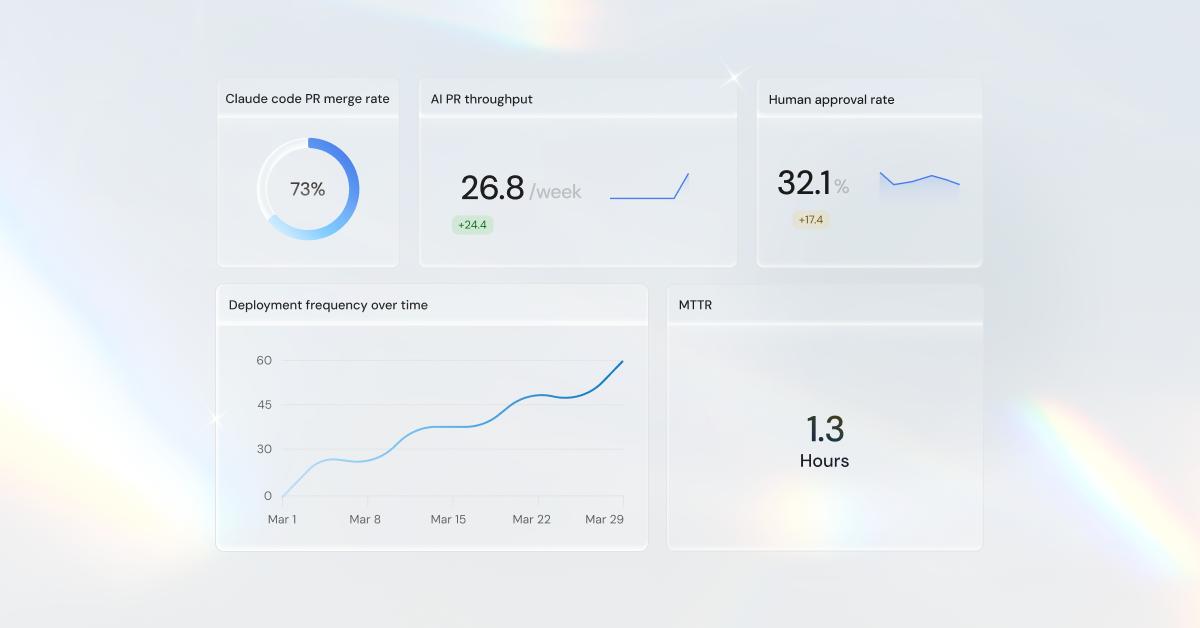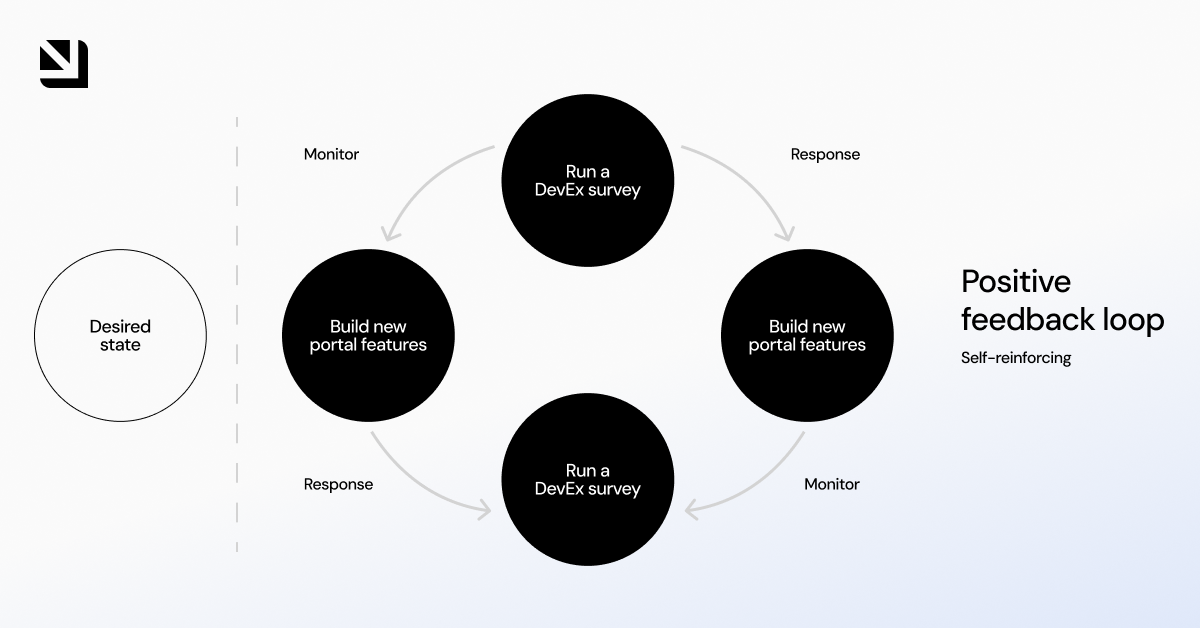Why Platform Engineers Need Your Direct Feedback


Modern engineering organizations face a familiar but intensifying tension: deliver faster while simultaneously improving reliability, quality, and developer satisfaction. As software architectures grow, tooling multiplies, and AI-driven workflows enter the SDLC, what once resembled a simple, unidirectional pipeline has become a complex and interdependent engineering system.
And despite all the dashboards, telemetry, and automation we rely on, one critical signal remains consistently underutilized: The daily experience of the engineers using the platform.
What slows them down? What feels frustrating or unclear? Where does friction appear during coding, reviewing, CI/CD, deployment or operations? Which improvements would genuinely help them move faster and with more confidence?
These answers never surface in logs. They live in the voices of engineers.
Developer experience matters more than ever
DevEx is not about perks or preferences. It is about productivity, clarity, and the ability to do great work without facing unnecessary friction.
A good DevEx leads to:
- Faster feature delivery
- Higher software and code quality
- More autonomy
- Smoother collaboration
While a poor DevEx leads to:
- Friction and frustration
- Rework
- Slowdowns
- Loss of focus and motivation
Engineering teams invest heavily in platforms, pipelines, tooling and automation. But they rarely have a structured and consistent way to understand whether these investments actually improve the developer experience. This is why developer feedback, collected in a systematic and routine way is essential.
Engineering Intelligence: The single source of truth for developer feedback and engineering performance
To drive meaningful improvement, Platform Engineering teams need to combine qualitative insights (how engineers feel, where friction exists, what slows them down) with quantitative signals (DORA metrics, cycle time, review duration, PR throughput, deployment patterns and other SDLC metrics).
Both types of feedback are essential:
- Qualitative feedback explains the “why” behind frustration, friction and slowdowns
- Quantitative metrics reveal the “what,” “where” and “how often” issues occur
When combined, they create a complete and trustworthy picture of engineering performance. This unified view is exactly what Port’s Engineering Intelligence solution delivers.
Engineering Intelligence blends human signals such as sentiment, friction, and clarity with operational indicators like review speed, CI performance, deployment reliability, and context gaps.
It helps platform engineers understand:
- Where friction turns into measurable slowdowns
- Which bottlenecks are structural vs. behavioral
- Where automation or self-service will deliver the highest impact
- Where developer sentiment diverges from system data
- Where agentic workflows need additional context or guardrails
Engineering Intelligence turns scattered feedback into actionable, data-driven insights. It becomes the foundation for improving developer experience, guiding platform investment, and enabling AI agents to operate safely and effectively across the SDLC.

Why platform engineering needs direct input from developers
Platform engineering sits at the center of every modern organization. They are the builders who enable developers and the broader organization by making critical systems - CI/CD, environments, workflows, self-service, automation, permissions, and increasingly, the capabilities that enable AI and agentic workflows - frictionless and accessible across the organization.
Without direct input from developers, however, platform teams may risk basing their decisions on assumptions or isolated anecdotes:
- “My pipeline failed again and I’m sure it’s a platform issue.”
- “Reviews take forever and I don’t even know who is supposed to approve.”
- “This tool is slow and completely breaks my flow.”
- “The onboarding docs are outdated or impossible to find.”
- “Why is deployment so complicated and full of unnecessary steps?”
- “Provisioning takes too long and blocks me from getting started.”
These comments matter, but they are not systematic, measurable, or representative of everyone’s universal experience.
To prioritize effectively, platform engineering needs structured, organization-wide feedback and Port enables exactly that.
Taking this a step further, with Port, platform engineering not only learns of friction points, but can also enable better outcomes for the teams they support through agentic workflows built into Port.
- Fixing failed jobs automatically: Port’s agents diagnose, and resolve CI/CD job failures, cutting DevOps overhead and keeping pipelines flowing. Platform engineers no longer have to spend hours troubleshooting ad-hoc issues or being pulled into endless Slack threads about broken pipelines.
- Self-healing incidents: Agents suggest first-response playbooks based on real-time catalog data, driving MTTR toward zero. Also platform engineers and SREs aren’t stuck firefighting the same recurring issues again and again
- Assess release risk with AI: The Risk Management Agent analyzes every release for potential impact and recommends safer deployment options (canary releases, feature flags, incremental rollouts, and safe rollbacks). Developers ship with confidence, and platform engineers avoid last-minute risk reviews.
- Understand how teams use coding assistants and agentic workflows: measure impact of agents to optimize team productivity and improve delivery speed and quality. Platform engineers get real data instead of guessing whether AI tooling actually helps or just adds noise.
- Control delegation processes: route each ticket to the right owner, agent or human, helping developers move faster and platform engineers stay on track
- Enforce standards at scale: show real-time standards and compliance adherence. When standards slip, agents auto-suggest fixes so developers don’t get blocked and platform engineers don’t spend their time chasing compliance drift or policing repos by hand.
Port not only allows platform engineers to build agentic workflows but also provides a way to measure outcomes from these workflows and prove the value of incorporating AI into the SDLC.
Using Port Surveys to understand Developer Experience
Port’s survey capabilities give platform engineers a simple and scalable way to listen to developers continuously. Instead of guessing where friction lives, surveys surface real signals directly from the people doing the work.
With Port Surveys, platform engineering teams can capture:
- Developer satisfaction: How engineers feel about their tools, workflows, onboarding, documentation, automation and overall productivity.
- Developer experience: Where engineers encounter friction such as unclear processes, context gaps, slow reviews, noisy pipelines or inconsistent tooling.
- Key pain points: Recurring blockers, ownership ambiguity, inefficient handoffs or bottlenecks that slow delivery.
- Improvement opportunities: Where automation, self-service, guardrails or workflow refinements will have the biggest impact.
- Sentiment and trends over time: How experience shifts after releases, infrastructure changes or platform improvements.
And the best part is that it only takes a few minutes to set up.
If you want more flexibility and prefer to customize your own surveys to align with your organization, follow this step-by-step guide to create your first survey in Port.

Why It Matters
By combining developer feedback with the unified qualitative and quantitative insights provided by Engineering Intelligence, platform engineers can build a roadmap based on real needs rather than assumptions, and demonstrate measurable improvements in developer satisfaction and engineering performance.
Additional References
- Create & Track DORA metrics in your portal [Guide]
- Track AI-driven pull requests [Guide]
- Measuring pull request standards [Guide]
- EI Solutions Overview [Docs]
{{cta-demo-baner}}
Get your survey template today
Download your survey template today
Free Roadmap planner for Platform Engineering teams
Set Clear Goals for Your Portal
Define Features and Milestones
Stay Aligned and Keep Moving Forward
Create your Roadmap
Free RFP template for Internal Developer Portal
Creating an RFP for an internal developer portal doesn’t have to be complex. Our template gives you a streamlined path to start strong and ensure you’re covering all the key details.
Get the RFP template
Leverage AI to generate optimized JQ commands
test them in real-time, and refine your approach instantly. This powerful tool lets you experiment, troubleshoot, and fine-tune your queries—taking your development workflow to the next level.
Explore now
Check out Port's pre-populated demo and see what it's all about.
No email required
.png)
Check out the 2025 State of Internal Developer Portals report
No email required
Minimize engineering chaos. Port serves as one central platform for all your needs.
Act on every part of your SDLC in Port.
Your team needs the right info at the right time. With Port's software catalog, they'll have it.
Learn more about Port's agentic engineering platform
Read the launch blog
Contact sales for a technical walkthrough of Port
Every team is different. Port lets you design a developer experience that truly fits your org.
As your org grows, so does complexity. Port scales your catalog, orchestration, and workflows seamlessly.

Book a demo right now to check out Port's developer portal yourself

Apply to join the Beta for Port's new Backstage plugin
Further reading:

Learn more about Port’s Backstage plugin













.png)



